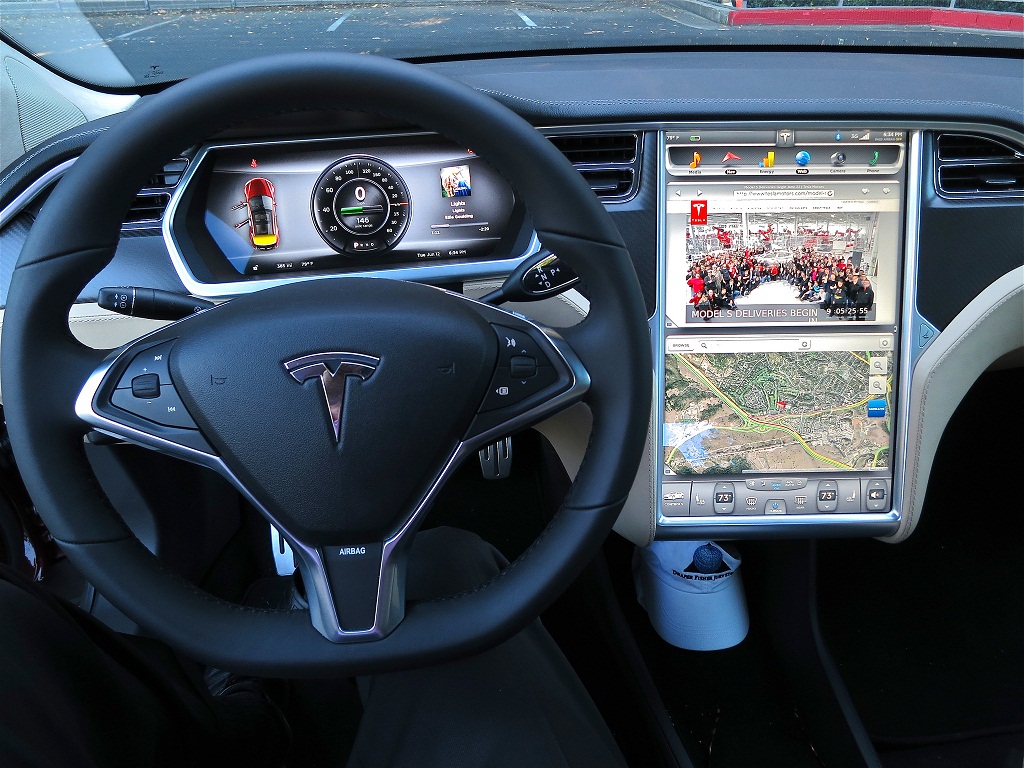
One of my favorite TV shows as a kid was Get Smart. Who can forget The Cone of Silence, the Shoe Phone, and, of course, Agent 99. Max, Agent 86, was funniest when he failed.
When thinking about autonomy, missing the target by even “that much” is not good enough, especially when people’s lives are at risk. As an early stage investor in the mobility space, I have seen and read a lot about the inaccuracies of GPS (and the inadequacies when indoors or in a snow storm). This week there were two relevant articles about competing solutions to replace GPS within the autonomous vehicle market: MobilEye’s computer vision solution like the Tesla S and 5D Robotic’s Ultra Wide Band being deployed on scissor lifts.
MobilEye (based in Israel) currently sells driver assistance technology intended to prevent accidents. In recent years it has been one of the major developers of autonomous car technology, and its systems come preinstalled in cars made by companies including Audi and Tesla Motors. Its systems use video cameras and advanced algorithms to identify and respond to other vehicles, bends in the road, pedestrians and traffic signs.
In the video below, the CEO of MobilEye, Ziv Aviram, takes the the US Ambassador for a drive in their autonomous car on the crowded highways of Jerusalem (anyone that has driven in Israel can appreciate this feat!):
“I have to say this is the first time I’ve ever been in a vehicle where the driver was not in control and I already feel much much safer than I ever would have imagined,” Ambasadro Shapiro said in a video of the ride released by the US Embassy on Thursday. “I can see that it’s probably safer than if a driver was in control of the vehicle, because drivers can be distracted but this vehicle cannot.”
Since 2009, 5D Robotics has been doing something revolutionary in the military space. We first wrote about their virtual rail technology last October, as they helped developers automate grocery deliveries for the elderly. Now, 5D Robotics has partnered with United Rentals to help the heavy equipment leaser’s scissor lifts load, unload, and park themselves in storage yards. The technology, which will replace labor-intensive remote control, is currently being rolled out to United Rentals’ 900 equipment yards across the country.
5D Robotics wound up working on such an unlikely platform because their so-called “Behavior Engine” navigation software can be plugged into any vehicle equipped for remote control. “It doesn’t matter if it’s a two-pound drone or a 7,000-pound car,” says spokesperson Phil Mann. That opens the door for a broad array of applications, with the company currently exploring many in industry. Mann says setting up a system like United Rentals’ can take as little as a few hours.
5D was born out of work at the Idaho National Laboratory, where cofounders David Bruemmer and Scott Hartley worked to solve mobility problems for the military. The two initial goals for the technology were to carry heavy loads for soldiers on foot and to make IED-detecting robots smarter. The software has already been used in more than 20 different robot models. Though the company was founded in 2009, Mann says they’ve only begun to pursue commercial applications over the last 18 months, with United Rentals the first client to go live.
5D’s military origins led to another unique aspect of their technology. While most autonomous vehicles in development rely on a combination of satellite GPS and onboard sensors, 5D adds Ultra Wide Band signals, or UWB. The signal, broadcast from a group of stationary beacons, give vehicles within a roughly 200- foot range location data accurate to 2 centimeters—trouncing GPS’s accuracy of 3 or 4 meters. UWB also works better than lasers or cameras in darkness and inclement weather (though 5D’s Behavior Engine can also work with those other inputs), and is resistant to interference from dust or competing signals.
While GPS is fine for now for WAZE and Uber, my prediction is that the autonomous vehicle market will demand a system of different collaborative technologies (like MobilEye and 5D) to provide real-time fixes to ensure safe driving. It will be exciting to see how these technologies evolve, and until then, we can always drive Max’s roadster.
Image credit: CC by Steve Jurvetson



